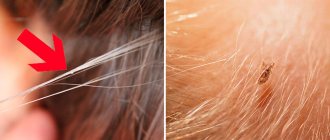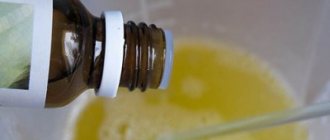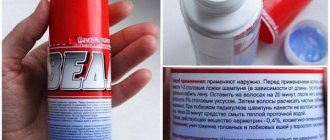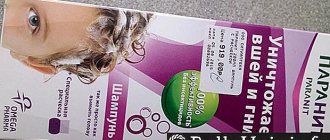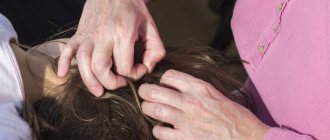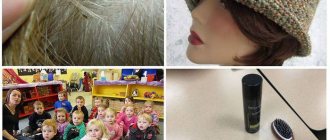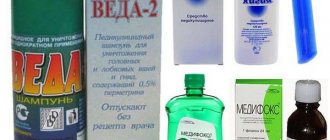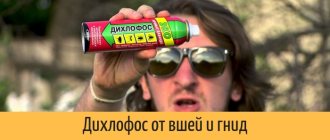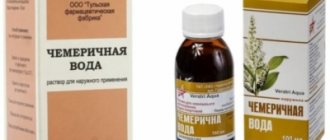Kerosene is an oil-based liquid that is obtained from the refining of petroleum products. Kerosene is used as fuel not only to refuel aircraft, but also in industry to generate electricity. But some people use kerosene to kill various kinds of parasites, for example, it has the ability to destroy nits and lice, regardless of their type. Kerosene has been used in folk medicine for a long time, but in the treatment of head lice it is inferior in effectiveness to modern medications.
Does kerosene help against lice?
At home, removing lice and nits using kerosene is quite possible. This oily mixture has a detrimental effect on parasites due to some of its characteristics:
- strong and unpleasant odor repels pests;
- the chemical composition blocks the breathing of adults, killing them;
- although the shell of the larvae is thicker, kerosene clogs it, weakening the future offspring;
- the composition of the adhesive base with which the louse attaches its face to the hair is easily washed off with kerosene;
- You can buy kerosene at any hardware or construction store; it is cheap.
Some sources write that kerosene “cures” lice, but this is absolutely not true. Yes, this flammable liquid kills adult bloodsuckers and significantly damages their offspring, but complex treatment also involves helping the scalp to recover. Kerosene, on the contrary, can irritate the skin even more, leaving burns and inflammation at the sites of lice bites. We advise you to resort to this folk method of treating lice only in extreme cases, when there is no pharmacy nearby or there is no opportunity to purchase a professional drug.
Effect on nits
It was experimentally determined that kerosene is not capable of killing all nits. The problem is that the nit has a fairly strong protective shell. In addition, her breathing is much slower than that of an adult.
Logically, in order to effectively poison nits with kerosene, you need to use it clean. In addition, it will take 4-5 hours to keep the flammable mixture on your head. Lice and nits, of course, will die. But the side effect will be a severe chemical burn, peeling of the burned skin and baldness. This is unlikely to suit anyone.
A special method will help you get rid of nits - step-by-step destruction. It involves the use of kerosene (in a diluted state or as an ingredient in “grandmother’s” recipes) and combing the hair with a fine comb. Thus, in just 2-3 sessions, both lice and their nits are removed. Every single one.
How to use correctly and what kerosene to use
What kind of kerosene can I use? Only technical and lighting , no other will be suitable for this purpose.
To remove lice with kerosene without harming the health of the infected person, you need to adhere to clear rules for using this folk recipe.
- Before use, perform a test to identify an allergic skin reaction. To do this, you need to moisten a cotton pad with kerosene and apply the liquid to the inside of your wrist. After 10 minutes, it will be possible to evaluate the test result and if redness or rashes appear at the application site, the traditional method should be abandoned, otherwise there is a risk of anaphylactic shock or Quincke's edema, these are the most severe forms of developing an allergy to kerosene.
- If you are not allergic to the product, you can safely apply kerosene to your hair, if possible without rubbing it into the scalp. Kerosene must be distributed over the entire length of the hair. Most of the nits and insects are located at the roots of the hair. Be careful not to get kerosene in your eyes.
- When all your hair is covered in kerosene, you need to put on a plastic bag or shower cap so that all your hair is under it, and you can wrap your head with a towel or a warm scarf.
- It is necessary to keep your hair under cellophane for 15 to 30 minutes, depending on the severity of the spread of head lice. It is best to wash off kerosene with laundry soap or concentrated shampoo. Repeat rinsing your hair with shampoo at least 2 times.
- Next, it is important to comb out dead and weakened parasites using a narrow-toothed hair comb, these are sold at the pharmacy. As a last resort, you can use a comb with a fine distance between the teeth.
- To remove unpleasant odor, hair can be rinsed in acidic water with the addition of acetic acid; one teaspoon per liter of water will be enough.
- And to reduce the negative impact of kerosene on your hair, rinse it with chamomile decoction or hellebore water over the next week.
Advantages and disadvantages
There are quite a lot of advantages and disadvantages, so before starting treatment, you should test yourself (a loved one) for fluid perception.
The advantages include:
- Quite effectively dissolves the base on the hair on which these pests adhere. This makes combing very easy. It is necessary to use small combs;
- the liquid has a rather pungent odor and this repels pests;
- eliminates adult insects by 90%;
- used as a prophylactic agent;
- the liquid effectively helps remove body lice (such pests live exclusively on clothing).
With all the listed advantages, the liquid also has a lot of disadvantages:
- It has a rather pungent odor that fills the room. There is also a strong smell from the person who has decided to undergo such treatment.
- In some cases, it causes a severe allergic reaction or irritation in the area of use.
- If the drug is used frequently, it can cause severe mutagenic changes in a person, which will affect the general condition.
- Cannot be used in the treatment of small children, only when they reach 12 years of age.
To control pests, only technical liquid is used. It is used to add to lighting fixtures. Other products are highly toxic and cause negative effects on the body.
Effective shampoos against lice and nits:
- Paranit;
- Veda and Veda-2;
- Pediculen ultra;
- Nix;
- Neath Free;
- Hygia.
Recipes with vinegar for lice and nits
No one wants to tell their friends that they have become “lousy” or go to the pharmacy and ask for a remedy for lice, although there is nothing wrong with that. But if you still couldn’t get to the pharmacy and buy a good product, you can try using kerosene.
Treatment consists of three stages. The first stage will destroy adult lice:
- A mixture is made of 1 tablespoon of kerosene , 2 tablespoons of sunflower or olive oil and 3 tablespoons of shampoo .
- The resulting composition is applied to damp hair from roots to ends.
- The hair is covered with a cellophane cap or bag, and a towel is wrapped on top to create a “bath”.
- In this state, the drug should remain on the hair for 30-40 minutes. This is an acceptable amount of time during which the skin will not get burned, and most of the lice will die.
- The head and hair are washed with warm water and vinegar; for this, 2 tablespoons of 9 percent vinegar are diluted per 1 liter of clean water.
- The hair is washed again, but this time with shampoo and tap water.
- From the roots to the very ends, the hair is combed with a special comb. This is a very important procedure, it cannot be neglected, otherwise the effect will be short-lived.
The second stage will weaken the attachment of the remaining nits (larvae) to the hair:
- The next day or every other day, a consistency is made from one teaspoon of kerosene and two tablespoons of oil.
- The resulting composition is applied to the entire length of the hair and left for 20 minutes without covering.
- Rinse your hair with the juice of one lemon mixed with a liter of water.
- Comb your hair thoroughly with a comb.
- Rinse with shampoo.
The third stage is aimed at destroying accidentally surviving parasites. Some nits may have survived and hatched. To prevent them from starting to multiply and die, four to five days after the second procedure, do the following:
- Prepare a mixture of 1 tablespoon of kerosene and 3 tablespoons of honey, diluted with three tablespoons of hot boiled water.
- Apply the mixture to your hair and leave for 30 minutes.
- Rinse off with warm water and wash your hair with shampoo.
- Go through your hair with a comb again to make sure there are no nits or dead lice.
To disinfect things, you can use a solution of water and kerosene in a ratio of 10:1. All things that came into contact with a person at the time of illness must be soaked overnight, then rinsed well and hung to dry, then ironed with the hottest possible iron. The same recipe will help in the fight against body lice.
To eliminate pubic lice that are localized in the intimate area, the most optimal recipe would be a kerosene-based solution with a small amount of regular vegetable sunflower oil. The components are taken in proportions of two tablespoons of oil to one spoon of kerosene. The resulting consistency should be applied to the area where lice live, if possible, cover with foil and lie down for 30 minutes. Afterwards, take a shower with plenty of gel or soap.
Based on statistics, a one-time treatment with kerosene is not enough, so to completely eliminate it, you need to repeat the procedure after 2-3 days. Only in this case will all adult individuals and their future offspring die.
Rules of application
To effectively remove lice with kerosene at home, first of all, you need to properly prepare its solution. For treatment, it is better to use lighting or technical kerosene.
The use of auto-tractor and aviation is highly discouraged. This choice is due to the excessively high aggressiveness of the last two products and the content of foreign components in their composition.
So, the combustible mixture is used in several versions:
- 100% (very carefully, but generally not recommended);
- kerosene with vegetable oil and regular shampoo (component ratio – 3:2:1);
- kerosene with honey, warm water and regular shampoo (component ratio – 1:9:1:12).
For convenience, each proportion is measured in teaspoons.
Algorithm of actions
Kerosene against lice and nits should be used in this way:
- A pure flammable mixture or a mass prepared according to “grandmother’s” recipe should be applied with a cotton swab (sponge) to dry hair.
- The entire hair-covered part of the head, eyebrows and even the neck should be treated. Men should also apply the scented product to their mustache and beard, if they have one. Nose and ear hair can be ignored.
- After completing the application of the kerosene solution, the head should be wrapped in cling film and a towel on top.
On the 4th day after the first session, a second one should be performed. To do this, you will need to prepare a medicinal mixture of kerosene (1 tsp) and any vegetable oil (50 ml). Apply it to your hair and leave for about 1 hour. Then rinse your hair with diluted vinegar and wash your hair with your usual shampoo.
Exposure time
Many people are concerned about the question of how long they need to keep kerosene on their heads in order to be guaranteed to get rid of lice and not be left without hair.
- If treatment of lice is carried out for an adult, the flammable mixture must be kept for approximately 1.5-2 hours. Reducing the time is fraught with a decrease in effectiveness (some insects will be able to survive and continue to reproduce), and increasing it can result in a chemical burn to the scalp.
- When it comes to a child, the maximum exposure time is 1 hour. In no case longer. This condition must be strictly fulfilled.
After the time has expired, you need to remove the towel and plastic wrap and thoroughly rinse your hair with regular shampoo. It is advisable to do this 3-4 times. In addition, as already mentioned, it is recommended to use table vinegar (a weak solution) to rinse the strands.
For children
It is unacceptable to use kerosene to combat lice in very young children. Even a slight excess of the concentration of this fuel can lead to very sad consequences - the child will suffocate. Children's heads should be treated with safe pharmaceutical preparations, the instructions for which indicate permission for a specific age.
Pediculosis can be treated with kerosene in older children using “adult” recipes. However, you must always remember to reduce the exposure time of the product on your hair to strictly 1 hour. A child's skin is very delicate and susceptible to aggressive chemicals. It is advisable to conduct a repeat session on the 4th day after the first.
Let us emphasize again. It is highly undesirable to use homemade kerosene for children. Unless in a hopeless situation - when there is no way to get to the pharmacy or purchase a safe drug.
Can it be applied to a child?
Back in Soviet times, kerosene was very popular as a treatment for head lice; this method was especially used on children, since at that time there was not a greater variety of pharmaceutical products as there are now. Back then, no one even thought that kerosene could harm a child.
But in fact, kerosene can cause a lot of health problems for a child. The thing is that the delicate scalp of a child before the age of 14 is susceptible to any toxic effects, which can result in a 1st, 2nd, or even 3rd degree burn. Therefore, it is better to treat head lice in children with more gentle antiparasitic agents.
Effect of kerosene on lice
Kerosene is very aggressive
a chemical that affects not only lice, but also their eggs - nits. It is this factor that most often becomes decisive when choosing a method of treating head lice, since many special anti-lice shampoos, sprays and other insecticidal agents neutralize only lice, and cause absolutely no harm to nits.
Most modern remedies work as follows: parasites, along with human blood, absorb an insecticide that paralyzes their nervous system.
Nits are protected by a hard shell that does not allow substance to pass through, leaving the embryo intact.
At the same time,
the delicate insecticide does not in any way affect the sticky secretion with which the nit is attached to the hair.
As a result, after treatment, lice are exterminated, but their new population remains alive. If you do not repeat the procedure in time, the newly hatched lice will have time to lay eggs, which will again be completely safe. And this cycle can continue for a very long time. Kerosene acts much more aggressively - it penetrates the chitinous cover of the parasite and clogs its respiratory system. At the same time, the substance weakens the attachment of nits to the hair, destroying the structure of the sticky secretion. But lice and nits are not the only ones who feel the destructive effects of kerosene.
The aggressive substance can leave painful burns on the skin, as well as severely worsen the condition of the hair and hair follicles.
Precautionary measures
- Kerosene is a rather aggressive liquid, and its use in its pure form without dilution with water often causes severe skin burns. This is especially true for preschool children.
- It is strictly not recommended to treat lice on colored hair with kerosene. The aggressive effect of ammonia in the dye already leads to weakening of the hair, so if you do not want to treat alopecia in the future, then you cannot use kerosene.
- When treating hair with kerosene, it is very important to ensure that the liquid does not get on the mucous membrane of the cornea. If this happens, immediately rinse your eyes with plain water to prevent burning.
Side effects
In traditional medicine, the kerosene method of killing lice is not recommended. Even despite its effectiveness proven over decades. All because of side effects.
- The pungent smell of kerosene lingers for a long time both on the hair and in the room where the treatment was carried out.
- Exposure to toxic liquid disrupts the hair structure, making it dull and brittle.
- Homegrown pediculicide may cause allergies. In some cases, even with a successful sensitivity test.
- Depending on the individual reactions of the body, allergies may occur.
- Failure to comply with the exposure time provokes severe skin burns.
It is worth mentioning separately that removing lice from children with kerosene is a very risky undertaking. Even if all precautions are taken and the correct ratio of components for the emulsion is taken, the child may develop an allergy, so it is best not to skimp and purchase pediculicidal shampoo at the pharmacy. And you shouldn’t forget about such a 100% effective method as shaving your head.
Shaving, of course, is not the most aesthetic option, but it is certainly safer than kerosene
Who can't?
In the article, we partially figured out who should not use flammable liquid to fight parasites, to summarize:
- children under 14 years of age;
- pregnant and lactating women;
- people with dry colored hair suffering from increased hair fragility;
- people with damage to the surface of the scalp;
- for allergy sufferers.
The stronger the concentration of kerosene, the more effective the resulting composition will be, but it is important to remember that kerosene and its vapors are harmful to humans.
Child hair treatment
Children's skin is much more delicate than that of an adult, and therefore the risk of getting a burn from exposure to kerosene is significantly higher. To avoid negative consequences, it is recommended to use an emulsion recipe with olive oil or honey. At the same time, children under 5 years old are strictly prohibited from treating their hair with products containing kerosene.
Instructions:
- Mix 50 ml olive oil and 1 tsp. kerosene.
- We apply it to the head.
- We hold it for one hour (!).
- Wash off with water and vinegar (1 tablespoon of vinegar per 1 liter of water).
- Wash your hair thoroughly with shampoo.
- Comb wet hair with a thick comb.
It is recommended to comb your hair over the bath so that you can immediately wash off the parasites, and also rinse the comb for convenience - After three days, the treatment is repeated. The emulsion can be used either the same, with olive oil, or with honey and shampoo in the proportions indicated in the table.
Causes of pediculosis
The main cause of infection is contact with an already infected person, using personal belongings or swimming in the same pool. Household contact is the main source of lice infection. A person does not know where the danger lies in wait for him, because even when sending a child to kindergarten, one cannot be completely sure that he will not catch this disease and bring it home.
In addition, there are several provoking factors for the appearance of lice:
- frequent business trips;
- regular change of place of residence;
- promiscuous sex life;
- using other people's personal hygiene products;
- travel by public transport.
All these reasons can cause the appearance of head lice.
How to use the product correctly?
Before you start using kerosene, you must conduct a sensitivity test - apply a small amount of the product to your wrist or the inside of your elbow and wait half an hour. If there is no itching, burning, redness, or rash, treatment for lice can begin.
The answer to the question of how long you can keep the product on your hair depends on the sensitivity of the scalp and the general condition of the person. The average duration of the procedure is 30–90 minutes.
All kerosene-based mixtures can be applied to clean or dirty, but always dry hair.
Recipes
The following ingredients will help get rid of head lice:
- A portion of shampoo will help reduce the toxic effects of kerosene. You need to add 15 ml of kerosene to it, treat your head with the composition and hold for a quarter of an hour. Then you should rinse the strands thoroughly. This method is considered gentle and safe, but is only suitable for treating mild forms of lice.
- To treat a child, elderly and weakened people, it is necessary to add 15 ml of kerosene and baby shampoo to 45 ml of liquid honey, dilute all 60 ml of hot water. Mix the ingredients. Apply a moderately hot mixture to your head, put on a polyethylene cap, and wrap your head in a towel. The mixture should be washed off after 1.5–2 hours. Children can keep this mask for no more than 1 hour.
- Mix 45 ml of kerosene and melted badger fat, add 200 ml of warm milk, stir. Distribute the mixture evenly over dry strands and skin. Keep the product for a quarter of an hour, but perform the procedure 4 times a day.
- When using kerosene, treatment must be carried out several times with an interval of 7–10 days. To re-apply, it is better to prepare a mixture of 50 ml of olive oil and 5 ml of kerosene and leave it on the strands for an hour. This remedy effectively copes with weakened bloodsuckers without causing harm to the skin. The composition has a mild effect, so it can be used to treat children with mild forms of lice infestation.
To poison body lice, clothes and bedding need to be soaked for 12 hours in a solution of 15 liters of water and 1.5 liters of kerosene. This solution is also suitable for treating the room during the treatment of head lice.
Repeated washing and airing will help remove the specific smell.
It is strictly forbidden to use kerosene to eliminate pubic lice.
Prevention
How to reduce the risk of getting head lice:
- Always use only your own comb and do not allow anyone else to use it.
- Do not dry yourself with a towel in public places.
- If possible, follow a daily routine and stay in crowded places as little as possible.
- Wash your hair with shampoo once a week, as a preventive measure, if there is a risk of infection.
- Examine the head as often as possible to identify lice and nits (especially in a child); if detected, immediately begin to fight them.
Cooking recipe: how to properly dilute kerosene
If you do not have the slightest opportunity not to use this rather dangerous method of treatment, it will be useful to know how to use kerosene for lice and nits. To reduce the harmful effects on the skin, kerosene is mixed with any vegetable oil in a ratio of 1:10.
There is another popular recipe. It is used to remove lice from both adults and children. To achieve an antiparasitic effect, you need to mix all the components correctly. Take one tablespoon of kerosene, add the same amount of shampoo and mix thoroughly. Then add two tablespoons of olive or sunflower oil. The anti-lice composition is ready for use.
How does kerosene work against lice?
Kerosene is a flammable substance, a mixture of hydrocarbons obtained during oil refining. In appearance, it is a yellowish transparent liquid with a pronounced odor that everyone can distinguish. The substance is used in many industrial enterprises, and in alternative medicine it is widely used against lice.
Nowadays, medicine has created many pharmaceutical remedies against pediculosis, but kerosene does not lose its effectiveness against this scourge. It is much cheaper, although it is not so easy to get it in urban areas. Poisoning lice with kerosene is most often practiced on the head, but this remedy also helps against pubic lice.
How exactly does the product act on harmful insects? Its effectiveness is due to the following properties:
- Repels parasitic insects with its “aroma”.
- Kills some eggs and adult lice with vapors.
- The attachment of nits to the curls weakens, they are easily removed from the head.
The substance penetrates the chitinous cover of insects, disrupting the process of respiration and blood circulation. Due to lack of oxygen, they quickly die. The drug, of course, also has a negative effect on nits, but their shell is more reliable. Therefore, the concentration of kerosene to kill nits must be high, but this can lead to serious consequences for humans. Therefore, you will have to comb out insect eggs manually, fortunately, it is quite simple.
About kerosene
Kerosene is a flammable mixture of liquid hydrocarbons used as jet fuel, solvent, and raw material for the oil refining industry. In addition, lighting kerosene is used in the process of firing glass and porcelain products, for heating and lighting devices.
Variety of kerosene containers
In addition to being used on an industrial scale, the mixture helps at home. Back in the last century, they began to use kerosene for hair.
